yoga for life
TYPES OF YOGA
ASHTANGA YOGA (PATANJALI'S ASHTANGA YOGA - EIGHT LIMB / STEP YOGA)
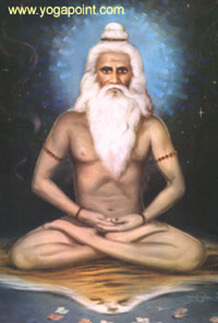
The basis of Ashtanga yoga is the Yoga sutras (Sanskrit Verses) of Patanjali. We will consider the different aspects of yoga while remaining under the guiding principles of Patanjali's Yoga (Ashtanga yoga). The Asana, Pranayama, Dharana, Dhyan & Samadhi or the Yama and Niyama are systematically described by Patanjali in his Sanskrit Sutras (verses).
- Pratyahara (Withdrawal of Senses)
- Dharana (Concentration on Object)
- Dhyan (Meditation)
- Samadhi (Salvation)
HATHA YOGA
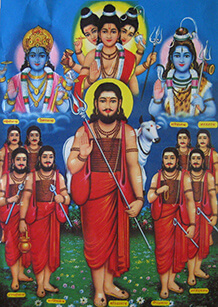
The Hatha Yoga system includes asana along with the six shatkarmas (physical and mental detox techniques), mudras and bandhas (psycho-physiological energy release techniques) and Pranayama (pranic awakening practices). Fine tuning of the human personality at increasingly subtle levels leads to higher states of awareness and meditation.
JNANA YOGA
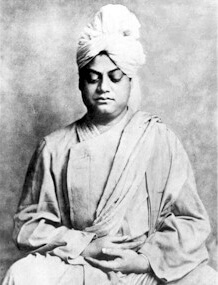
Jnana Yoga is the process of converting intellectual knowledge into practical wisdom. It is a discovery of human dharma in relation to nature and the universe. Jnana Yoga is described by tradition as a means to obtain the highest meditative state and inner knowledge.
Some of the components of Jnana Yoga are :
MANTRA YOGA
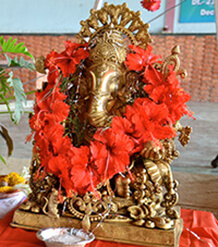
Mantra Yoga has its origin in Vedic Sciences and also in Tantra, in fact all the verses in Vedas are called mantras, it is said that any person who can chant or sing Vedas can achieve the ultimate salvation or union with supreme consciousness only by chanting the mantras, which is the aim Mantra Yoga
BHAKTI YOGA
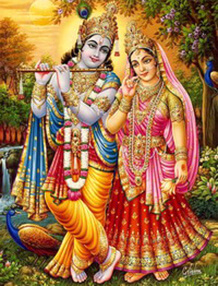
Bhakti is a Yoga of devotion or complete faith. This faith is generally in the God or supreme consciousness in any of the forms. It may be Lord Rama, Krishna, Christ, Mohammed, Buddha etc. It may be a Guru for his disciples.
Continuous meditation of God or object of faith gradually decrease the ego of the practitioner, which further prevents new distractions, fickleness or even pain and induces strong bonds of love. Slowly the practitioner looses the self identity and becomes one with the object of faith, this is a state of self realization.
KUNDALINI YOGA (FROM THE TANTRAS)

This system of Yoga is concerned with awakening of the psychic centers or chakras, which exists in every individual. (Please refer to the figure) There are six main chakras in the human beings.
KARMA YOGA
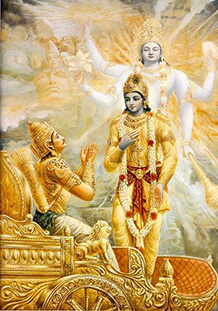
Karma Yoga is a path of devotion to the work. One looses his identity while working, only selfless work remains. This state is very difficult to achieve.
The essence of Karma Yoga as extracted from 'Bhagvad Gita' says: The world confined in its own activity except when actions are performed as worship of God. Therefore one must perform every action sacramentally and be free of your attachments to the results.
KRIYA YOGA
The word kriya means 'activity' or 'movement' and refers to the activity or movement of consciousness. Kriya also refers to a type of practical or preliminary practice leading to total union, the final result of practice. Kriya Yoga does not curb mental fluctuations but purposely creates activity and awakening in consciousness. In this way all faculties are harmonised and flower into their fullest potential.
SWARA YOGA

Swara is Sanskrit word, meaning sound or note. It is also a continuous flow of air through one nostril. Yoga means union, so Swara yoga is a science which is realization of cosmic consciousness through control and manipulation of breath.
Swara Yoga is science which is a complete study, observations, control and manipulation of breath or Swara. Pranayama is only related to control of breath in various ways. In swara yoga, you will find association of breath in relation to activities of sun, moon, various seasons, physical and mental conditions of individuals etc. So Swara Yoga is more comprehensive in theory and practices related to breath.
RAJA YOGA
Raja Yoga is a comprehensive yoga system which deals with the refinement of human behaviour and personality through the practice of the yamas (restraint) and niyamas (disciplines); attainment of physical health and vitality through asanas (postures) and pranayamas (pranic breathing techniques); management of mental and emotional conflicts and development of awareness and concentration through pratyahara (sensory withdrawal) and dharana (concentration); and developing the creative aspect of consciousness for transcendental awareness through dhyana (meditation) and samadhi (absorption in the universal identity).

Comments
Post a Comment